Getting the right high fiber low carb foods can be a challenge to many people. The good news is that almost all low-sugar fruits and non-starchy vegetables have high fiber and nutrient content. Those on a keto diet may be facing a shortage of fiber and low carb foods hence the need to rethink their nutrition. You may feel unsure about the levels of HFLC food content in your regular diet for optimal health. When you add the right foods in your diet, you will get adequate nutrition for a healthy body and maximize your health benefits.
Related: Health benefits of a low-carb diet
A diet revolving around high fiber low carb has lots of greens, fruits, and some reputable nuts. A well-constructed low carb diet will deliver the daily recommended amounts of fiber for healthy digestion.
Why Fiber?
The body needs fiber but it does not digest it. Fiber comes in two varieties, soluble and insoluble, whereby most plant sources contain both types. The soluble fiber turns into a gel, therefore, slows down digestion by lowering the levels of blood glucose and cholesterol. The insoluble fiber remains the same all through, but functions in making the waste softer and heavier for easy elimination.
Neither type of fiber is absorbed into the body, but skipping on your daily dose will result in constipation and makes waster elimination an uncomfortable and painful process. Eating inadequate amount of fiber can result in difficulty controlling blood sugar and appetite as fiber lowers the speed of digestion and makes you feel full.
Overdoing it has its demerits, including food moving through the intestines too fast and leaving little time for the nutrients and minerals to be absorbed. It also causes uncomfortable bloating, gas, and cramping especially if you dramatically increase fiber intake overnight.
Related: High Protein Low-Carb Foods
Is Fiber Carbohydrate?
Even though fiber is a carbohydrate, it is of a special type that the human body cannot digest. The human digestive system cannot dismantle fiber into simple sugar the way it does regular carbohydrates. Since it passes the digestive tract without being digested, fiber acts as a regulator of blood sugar levels and keeps hunger at bay.
The only way fiber provides calories is as a product of fermentation in the colon but not as glucose. By creating a feeling of satiety, fiber helps prevent weight gain and helps moderate the effects of usable carbohydrates in the bloodstream. It prevents hypertension and maintains a healthy level of LDL cholesterol.
For a healthy lifestyle, it is recommended that you take 20-30 grams of fiber daily. Most people, however, survive on about 15 grams a day due to bad meal planning or from not being aware of the right sources of dietary fiber. The best sources of fiber include fresh fruits, vegetables, legumes, nuts, and whole grains.
High-Fiber Low-Carb Foods
If you have a plan to limit the number of carbs you consume while still maintaining a healthy fiber intake, use this reference to get the best foods with a good usable carb to fiber ratio. The following foods are high fiber low carb making them the best for you.
Vegetables
1. Collard Greens
This vegetable is a part of the cabbage family and is regarded as one of the most nutritious foods in calories. It is rich in omega-3 fatty acids and a reliable source of fiber. When cooked, half a cup of collard greens contains 31 calories, 3 g fiber, and 2 g carbs. When taken raw, one cup has half a gram of carbs, a gram of fiber, and 12 calories.
2. Spinach
Spinach is a common vegetable and a rich source of fiber to any diet. When you take 100g of spinach, you will get 2.2g of fiber and about 3.63 grams of carbs. This makes the vegetable a healthy high fiber low carb food. You can eat spinach in any form you like including in stews, soups, sautéed or as salads. It is a good source of Vitamin A and contains sufficient amounts of calcium for healthy bones and iron for blood health.
3. Broccoli Rabe
This is a vegetable with features similar to turnip greens or mustard. The broccoli rabe buds form their stalk making them completely different from the regular broccoli. 100g of the vegetable supplies 2.7g of fiber and 2.85g carbs. The leaf is bitter so cannot be eaten raw but is taken after steaming or sautéed. You can quell the bitterness with lemon or garlic seasoning. It contains lots of calcium, magnesium, and iron, in addition to the high fiber content. It has a protein load of 9 grams from every cooked 8 ounces.
4. Bok Choy
Also known as the Chinese cabbage, Bok Choy belongs to the cabbage family and delivers1g fiber and 2.18g carbs for every 100g. It is available in two types, large white stalks and dark green leaves. It is an excellent source of high fiber low carb diet and has plenty of vitamin K, C, A, and beta-carotene.
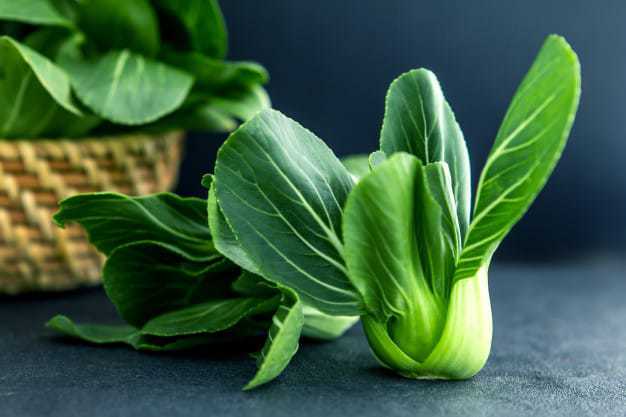
5. Asparagus
Being a part of the lily family, the plant portion is edible so its spears are harvested. It is a safe vegetable and is very popular in cuisines around the world. Asparagus is a good source of HFLC with 2.1g of fiber and 3.38g of carbs for every 100g. It supplies minerals and vitamins making it an all-round diet. It supplies a very low amount of carbohydrates hence its regard as a good low carb diet component.
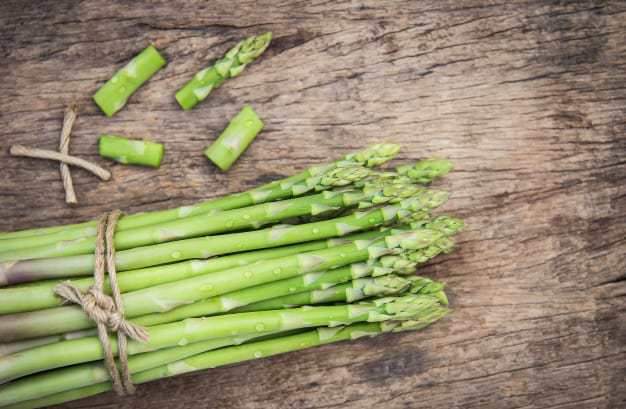
6. Raw Cauliflower
Cauliflower is among the most versatile vegetables you will ever use. It has a mild taste and can be used with numerous recipes in so many ways. One cup of the vegetable supplies 2.5g of fiber and 2g carbs. It is found in the same group as broccoli though broccoli is more popular. Turning to this vegetable will earn you more than the anticipated health benefits as it is a rich source of vitamins and minerals.

7. Mushrooms
Even though mushrooms are fungus and not vegetables most people still treat them as veggies. When you make them a part of your diet, you can easily get your daily vegetable requirements by taking two to three cups. If your goal is to cut weight then mushrooms are the right vegetables to incorporate into your diet. 3 ounces of white mushrooms contain 0.8g of fiber and are helpful in cutting weight due to their low-calorie content.
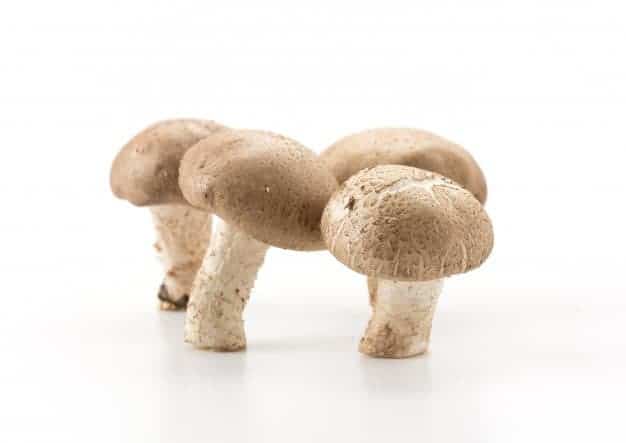
8. Bell Peppers
Bell peppers and its cousins are common in cuisines worldwide. They are used to improve the taste of foods an can be included in casseroles, salads, and soups. They are not hot in case you fear pepper. This makes them appropriate for any person. A cup of this vegetable will get you 3g of fiber and 4 carbs. Even if they turn red, this pepper will still retain its sweetness. The different color variations contain the same mineral and vitamin contents and are a good source of vitamin C and help reduce inflammation that may cause heart diseases, cholesterol build up or diabetes.
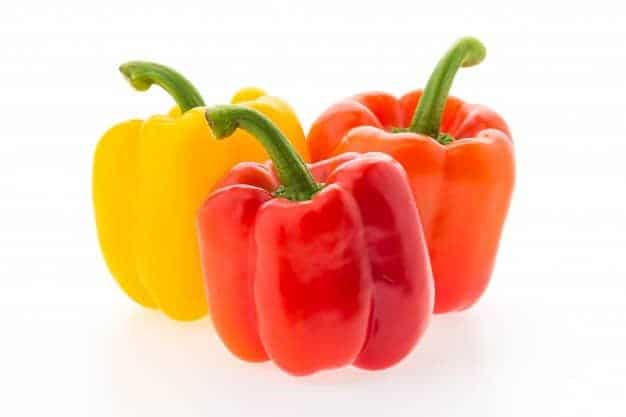
9. Tomatoes
Tomatoes are a common vegetable in almost every part of the world. Even though they are classified as fruits scientifically, they are regarded as vegetables. Tomatoes can be taken raw or cooked and for each 100g, you get 1.2g fiber and 4g carbs. Most western cuisines consider tomatoes the base sauce for meals.
10. Lettuce
It belongs to the daisy family and is an annual plant. Its leafy vegetable can be eaten and at times its stem and seeds are used as food. Lettuce is used commonly in salads and can be combined with other foods like sandwiches, wraps, or soups every cup of lettuce gives 0.5g carbs and 1g fiber.
Fruits
11. Avocado
Among the fruits you will ever eat, avocado is among the healthiest of them all. It is HFLC with sufficient amounts of fiber to regulate the amount of carbs and also contains copper, potassium, and foliate all of which has enormous health benefits. Every 100 grams of avocado will give you just 2 g of carbs and plenty of fiber. Whatever you eat, you cannot ignore this fruit as long as you have no allergies to consuming it.
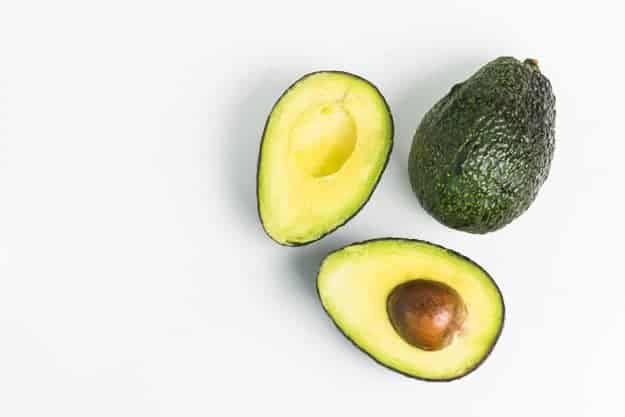
12. Blackberries
Blackberries are a rich source of fiber with 5.3g available in every 100 grams of the berry. The serving yields 9.61 g of carbs. If you are strict on a low carb diet, it is recommended that you eat the berries in small amounts. Eat these berries when they are very ripe or else you will develop a tart sensation. Use the berries in fruit salads, compote sauces and pies. You can also toss some into your ice cream. Blackberries supply copper and both soluble and insoluble fibers.
13. Eggplant
Also known as aubergine, this edible fruit is very common in North America, Australia, and New Zealand. One cup of the raw eggplant supplies 1.5g of fiber and 1.5gof carbs. It is available in different varieties with slight variations in texture and taste. It is a bit bitter and has a spongy feeling the mouth. The fruit is closely related to tomato and potato and is commonly cooked with other foods.
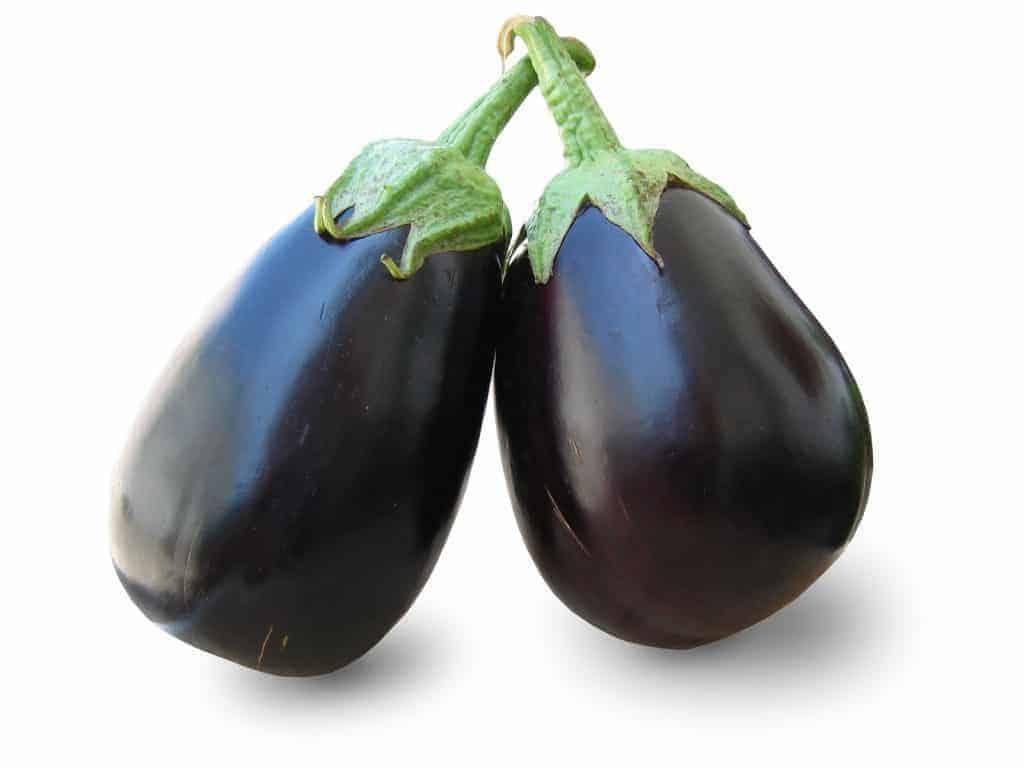
14. Mulberries
The traditional source of mulberries is Asia and North America. They have a structural resemblance to blackberries and are also prepared the same way. 100g of mulberries deliver 1.7g of fiber and about 9.8g of carbs. They are increasingly popular around the world due to their sweet flavor and high nutritional value. Traditional Chinese medicine has used this fruit for centuries to treat various diseases including heart diseases, anemia, arthritis, and diabetes.
15. Gooseberries
Even though the market availability of gooseberries is not guaranteed due to their unique growing conditions, they are a great source of dietary fiber. They grow in extreme winter and humid summer hence their prevalence in the Northern European climate. They occur in wide color variations and are rich in anthocyanin and flavones. 100 grams of gooseberries supply 4.3g of fiber and 10.18g of carbs. The tart fruit can be added to savory, protein, or cooked foods to give them flavor. When ripe, you can eat the fruit as they are.
16. Peaches
Peaches are great when cooked, but also do excellently in pies and with cobblers. Do to peaches whatever you like; you will still get the nutritional benefits. They are best eaten fresh from the trees when its juice is the sweetest. Each 100g of peaches delivers 1.5g fiber and 9.5g carbs.
Seeds and Grains
17. Wheat Bran
Wheat bran is a reliable source of fiber. When you take 100g, you get 1.5g of fiber and 2.4g of carbs. It has three different parts; germ, endosperm, and bran all of which have different health benefits. Other than being a source of fiber, wheat bran helps prevent breast and colon cancer. It also helps fight weight loss and heart diseases.
18. Flax seeds
Flax seeds are an excellent source of both soluble and insoluble fiber. It has very low carbohydrate content with 1 teaspoon of the ground seeds providing 2.8g fiber and 3g carbs. It is commonly used in vegan dishes since it expands when exposed to liquids. It makes an excellent binder and an alternative to eggs and is a rich source of omega 3 fatty acids.
19. Pumpkin seeds
Pumpkin seeds are an amazing source of minerals, fiber and carbs. You can chew it raw, to rid your gut of parasites and worms. Its tryptophan and glutamate contents help regulate sleep patterns and moods. Every 100g of the seed will give you 6 g of fiber and 10.71g of carbs.
20. Chia Seeds
Chia seeds have been traditionally associated with Southern America and are very dense in polyunsaturated fatty acids. They provide adequate fiber, omega 3fatty acids, and antioxidants. The seeds are used in low-carb smoothies as it gels when it comes into contact with water. One teaspoon of chia sees will give you 5.2g of fiber and 6g carbs.
Related: Low-Carb Chip Recipe

The Bottom Line
You may be avoiding excessive carbohydrates to keep your weight down and live a healthy life. However, this does not mean you should avoid all carbohydrates. When you add healthy high fiber low carb foods to your diet, you will be making your body healthier.
In circumstances where getting adequate dietary fiber is a challenge, one can use fiber supplements. However, these should never be a substitute for eating HFLC diet, which can also supply nutrients and antioxidants for a healthier life.
Even though fiber is essential and should be part of a healthy diet, there are some precautions when you decide to increase its intake. It is recommended that you increase the amount gradually to prevent developing intestinal distress. High fiber foods should go together with drinking lots of water since all fiber absorbs water. If eaten with insufficient water, fiber can cause constipation or chocking.
Related: Low-Carb food Recipes
Taking large amounts of fiber can reduce the absorption of some medication. Therefore, you should take the medication about two hours before or after. When you incorporate more fruits, vegetables, and bran in your meal, you will not lack adequate daily fiber. Make your plate more colorful with a variety of vegetables, nuts, fruits, and grains and live healthily.
References:
https://www.hsph.harvard.edu/
https://www.ncbi.nlm.nih.gov/pmc/articles/PMC3507301/
http://www.fitnesss.net/25-best-high-fiber-low-carb-foods/
https://pranathrive.com/high-fiber-low-carb-foods/
https://www.verywellfit.com/high-fiber-low-carb-food-list-2242216
https://www.uptodate.com/contents/high-fiber-diet-beyond-the-basics
https://my.clevelandclinic.org/health/articles/improving-your-health-with-fiber
https://greatist.com/health/surprising-high-fiber-foods
